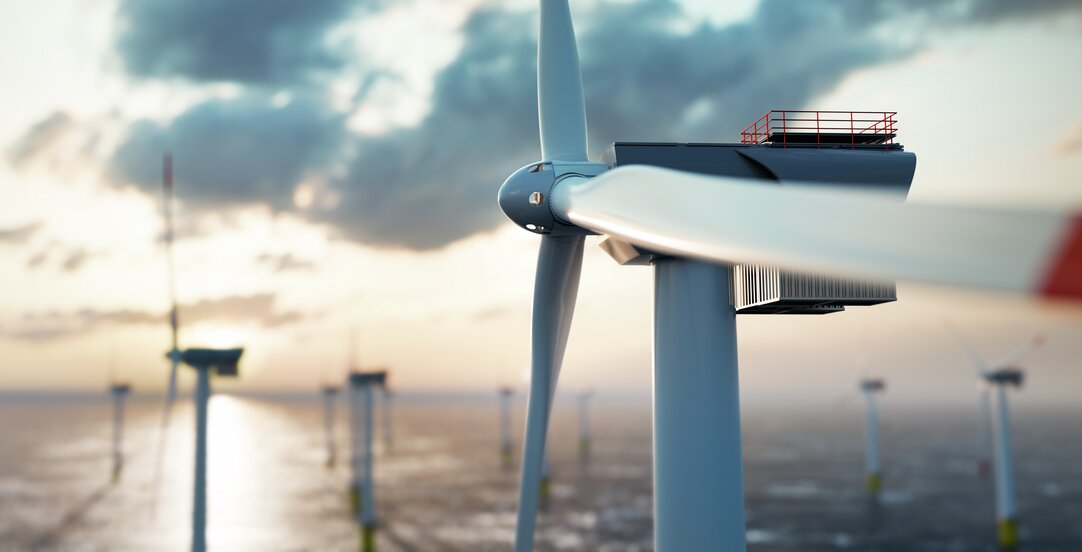Debt Capital Financing of offshore wind projects

Offshore wind projects will play an important role in meeting the world’s need and demand for sustainable energy going forward. Offshore wind projects make an attractive investment, due to, among other factors, their stable and heavily regulated nature, as well as their green profile and the possibility of long term cash flows.
Anumber of issues will however need to be resolved in order for financing of Norwegian offshore wind projects to attract commercial financiers. Central in this regard is a legal framework to enable adequate security to be available for financiers. Existing Norwegian legislation does not contain a legal basis to allow for adequate security for offshore wind production, possibly due to it being a newer industry.
Legal basis for the creation of security
Under Norwegian law, there must be a legal basis for security to be validly created over an asset. In addition to the Norwegian Liens Act (Panteloven), various pieces of Norwegian legislation allow for the creation of security, such as the Norwegian Maritime Code (Sjøloven) and the Norwegian Petroleum Act (Petroleumsloven). On the other hand, the Offshore Energy Act (Havenergilova) – which regulates offshore wind production – does not currently address provision of security.
Security typically provided in commercial finance is also available in offshore wind projects. Examples include pledges of the shares in the project company and floating charges over the borrower’ movable property (e.g. inventory, operating assets, and trade receivables). Security may also include assignment of the borrower’s monetary claims in respect of its bank accounts, insurance policies, loan agreements or other contracts. The borrower’s most valued assets in offshore wind projects, which are the wind turbines and licenses required for use of wind turbines in power production are not sufficiently covered by the listed examples.
Further, restrictions by law on the right to transfer an asset will equally restrict the creation of security over such an asset, unless otherwise expressly provided by law. According to the white paper dated 11 June 2021 published by the Norwegian Ministry of Petroleum and Energy (Veileder for arealtildeling, konsesjonsprosess og søknader for vindkraft til havs), a sale of an area for offshore wind installation or a direct or indirect transfer of an ownership interest in the holder of the license will require the consent by the Ministry. This will have implications on a pledge of shares in a project company, as enforcement will not be possible without first obtaining consent.
Wind turbines and licenses as security
Floating wind turbines could arguably constitute “operating assets”, allowing for security to be created in accordance with the Liens Act; based on the size and nature of the turbines, however, their status as operating assets remains uncertain. Further, floating turbines could qualify as “floating devices” (which do not constitute “operating assets”), allowing for security to be created in accordance with the Maritime Code. In 2020, one floating wind turbine was successfully registered in the Norwegian Ship Register (NOR). The registration process was time-consuming, partly due to technical requirements. As larger offshore wind project could consist of several hundred turbines, the suitability of this system for creation of security over larger offshore wind projects remains uncertain.
Turbines permanently installed and attached to the seabed (which applies to most turbines today), will not in any case qualify as either “operating assets” or “floating devices”. The view that floating and bottom-fixed turbines should not be distinguished between, provides the argument that floating turbines should not be covered by these definitions either. In fact, existing legislation on offshore wind does not generally distinguish between floating and bottom-fixed turbines. Market participants would therefore likely prefer that security against floating and bottom-fixed wind turbines are established in the same form and manner. Accordingly, relying on existing legislation permitting registration of ownership to and security against floating installations in general will not suffice.
Wind turbines on land, unlike those at sea, are mortgaged together with the real estate. Since the seabed is not subject to private property rights, offshore wind turbines cannot be mortgaged in the same way, whether floating or fixed.
As for the license to operate offshore wind turbines, no legal framework currently exists for the creation of security.
As shown above, the existing legal basis for the creation of security in offshore wind projects remains unsatisfactory for potential lenders. This could inhibit necessary investments for future developments. The regulatory framework for offshore wind projects should facilitate healthy competition and diversity on both the investor and supplier side. The aim should include ensuring that both smaller and newer developers get an opportunity to participate in competition with larger, established global players. This is especially true given these global players will have the edge of a stronger existing financial base, balance sheet, and potential equity investors. Regulatory solutions should therefore be put in place as soon as possible in order to meet the growing demand for green and sustainable energy and finance.
Debt financing
Offshore wind projects are expanding, and hold a big potential for growth under global goals to transition from fossil fuels to clean energy. This calls for the development of green and/or sustainable finance for banks and bond lenders to support. In this case, sustainable finance consists of the practice of integrating environmental, social and governance (ESG) criteria into financial services.
Green bank or bond loans
To cater to the demand for green investments and promote integrity in the green loan markets, the International Capital Market Association (ICMA), a non-profit membership association for participants in the international debt capital markets, has developed Green Bond Principles (GBP) for the issuance of green bonds. Further, The Loan Market Association (LMA) has published corresponding Green Loan Principles (GLP) for green loans.
Both GBP and GLP are sets of voluntary guidelines to clarify the circumstances in which a bank or bond loan can be considered green, and focus on use of proceeds. In order to qualify, proceeds must be designated for use within ESG. Offshore wind power is a renewable and seemingly infinite energy source, and the conversion of wind into power creates no harmful greenhouse gas – thus qualifying offshore wind projects as “green”.
To issue a green bond or take out a green loan, the borrower must agree on a green framework for the project (which should be verified by an external third party), and report on the use of proceeds to the bondholders or lenders.
In addition to the voluntary standards described above, the EU has developed its own EU Green Bond standard. This is intended to be a voluntary “gold standard” for green bonds. Use of the standard would protect investors from greenwashing and, hence, allow companies and public bodies to more easily raise large-scale financing for climate and environmentally-friendly investments. The standard will use the detailed definitions of green economic activities in the EU Taxonomy, and only projects that are in line with the EU taxonomy would be eligible for funding. Use of the EU green bond label will be voluntary, It will, however, also define a framework for green assets in the capital markets.
Sustainability-linked bank or bond loans
Both the ICMA and LMA have provided guidelines for Sustainability-linked loans (as they did for Green loans). However, it remains slightly more complicated to classify the loan as sustainability-linked, compared to the requirements to classify a loan as green. As supposed to the process for qualifying a green loan, the key to qualify as sustainability-linked is to show the borrower itself is performing in line with ESG criteria.
